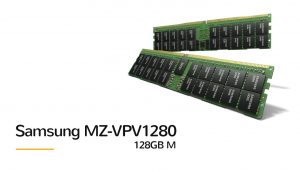
Introduction
Micron P320H PCIe-based solid-state drive ensures enterprise-grade performance for high-end desktop or laptop PCs. With PCIe controller, NAND flash memory, significantly low latency, faster random I/O, and remarkable durability are some of the notable features that make Micron P320H.
NVMe Interface – Introduction
As NVMe stands for Non-Volatile Memory Express, it refers to the way in which data is transferred, and has nothing to do with the form factor or shape of the drive. The primary way in which it distinguishes itself from the conventional SATA interface is that it is based on your system board’s PCIe interface to ensure significantly faster data transfer speeds than the SATA interface. Depending on your NVMe drive’s manufacturer, it shows a promising speed of 5x or 6x faster than its SATA counterparts.
There exist some NVMe SSDs that can be coupled with a standard PCIe system board slot just like a GPU, but most NVMe drives offer the M.2 form factor. Due to their high performance, NVMe SSDs typically cost more than their standard 2.5-inches SSDs, just like how SSDs usually cost higher than mainstream HDDs for the same storage capacity.
Who should buy NVMe SSD?
If you’re going to opt for an M.2 SSD to use in your high-performance system or gaming PC, it’s vital to note whether you want to acquire a SATA SSD or an NVMe SSD. Your system board might not offer the designated M.2 slots for both types (SATA and NVMe M.2 drives have different connectivity interfaces), and even if supports NVMe, it doesnt necessarily mean to waste money on a costly NVMe SSD if the system board you are using can only access data via the SATA standard (as not all system boards support for PCIe protocol).
As far as the performance factor is concerned, it’s mandatory to mention that the speed boost promised by the NVMe standard primarily applies to sequential data read/write operations rather than random read/write operations. It means you’ll only experience a significant boost in speed if you’re using your PC for particular high-end workloads like content productions tasks or regularly transferring large volumes of data from one drive to another. Random read/write operations on an NVMe SSD are relatively faster than what you’ll get on a SATA SSD, but if you’re using your PC for playing entry-level games or routine tasks like browsing or watching Netflix series, you dont have to opt for a highly expensive NVMe M.2 SSDs like Micron P320 NVMe SSD that comes in 2 modules:
| Micron P320H Specifications | ||
| User Capacity | 350 GB | 700 GB |
| Interface | PCI Express 2.0 x8, Half-Height, Half-Length | |
| Sequential Read | 3.2 GB/s | |
| Sequential Write | 1.9 GB/s | |
| 4 KB Random Read | 785,000 IOPS | |
| 4 KB Random Write | 205,000 IOPS | |
| Power Consumption (Active) | 25 W | |
| Power Consumption (Idle) | 10 W | |
| Write Endurance | 25 PB | 50 PB |
Once you acknowledge your requirements or workload, you can start exploring a multitude of M.2 SATA SSDs and M.2 NVMe SSDs as per your specific requirements. Again, if moderate gaming and routine computer tasks are your primary concerns, it is recommended to save your expenditure by opting for budget-friendly M.2 SATA SSDs. If, however, you want to attain high-end storage performance to compliment the speed of your high-end CPU and GPU you need ultra-fast sequential read or write operations and it’s worth opting for an NVMe SSD.
Micron’s P320H Review and Details
A number of storage manufacturers have started introducing more NVMe SSDs for the consumer market in the last two years. Micron P320H NVMe SSD is of half-height and half-length PCIe-based SSD. The P320H is available as 350GB and 700 GB storage modules. It’s a little bit expensive, but you get a remarkable performance upgrade for around $10 per GB.
Keep in mind that Micron offers the Real SSD P320H in one other format (aside from the half-height, the half-length design we’re discussing right now) that comes as 2.5-inches PCIe-based SSD and is available as 175GB & 350 GB storage modules but is limited to offer 415,000 4KB random reads and IOPS & 1.75 GBps in sequential reads. Although these numbers are still prominent, this particular form factor requires a server equipped with a dedicated PCIe interface to ensure connectivity.
With a significant read performance of up to 3.2 GB/s and as many as 785,000 4 KB random write IOPS, Micron is fundamentally saturating a 2nd-generation PCIe x8 link with the HHHL version of its Micron P320H SSD. Incorporating NAND flash memory ensures 50 PB of write endurance on the 700 GB variant.
End Words
M.2 NVMe SSDs are coming into the mainstream for being more budget-friendly than ever. M.2 NVMe SSDs like Micron P320H are on the verge of becoming the standard storage medium for the upcoming desktop or laptop PCs. On the other hand, you can save a significant amount of money by opting for a mainstream HDD or SATA SSD. When it comes to routine computational tasks you will hardly notice any difference in performance but for high-end content producers and heavy games, it will be worth spending a little bit extra to have high-end NVMe M.2 SSDs.

